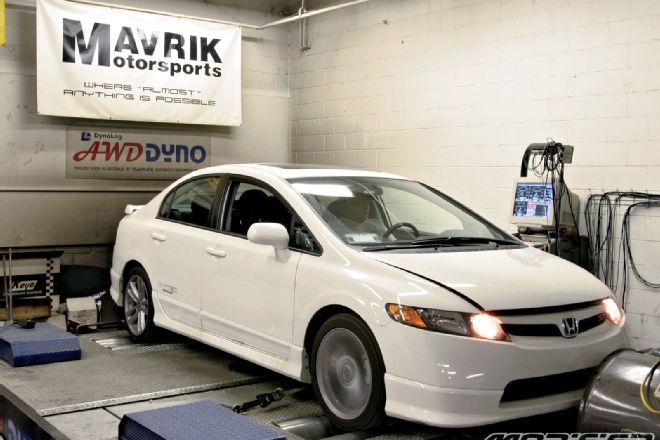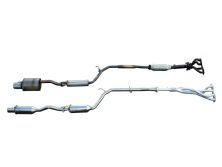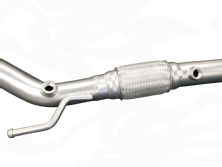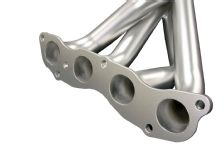Specifications & Details
'07 Honda Civic Si Four-Door
Engine: 2.0-Liter K20A3 Inline-4
Relevant Modifications: Stock
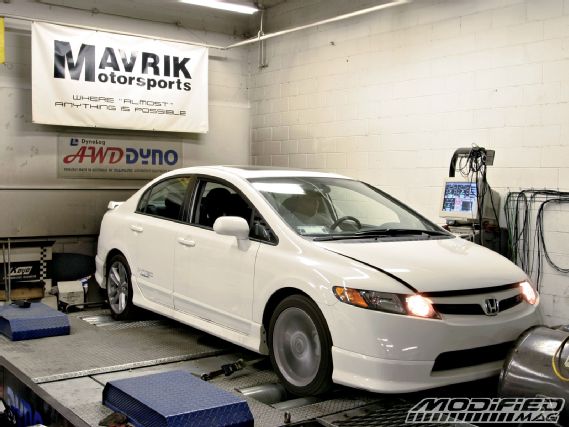 |
2007 Honda Civic Si - DC Sports - Proving Grounds
|
2007 Honda Civic Si - DC Sports - Proving Grounds
Description
Simple bolt-on power isn't as easy as it once was. Vehicle manufacturers are now spending more and more time squeezing every little bit of power possible out of their stock exhausts and intakes. Compound this with the super-smart and super-finicky engine management systems on modern cars, and you'll often find that bolt-on exhausts make little (or even lose) power. The lack of power gain isn't because of flow restrictions like 15 years ago. Making power nowadays is almost strictly a function of controlling air/fuel ratios. Without computer tweaks, the only way to change an engine's WOT air/fuel ratio is by tricking it with bolt-on parts.
This is especially the case for modern Hondas like the S2K, so we weren't holding our breath when we tested DC Sports' race header and cat-back exhaust for the '06+ Honda Civic Si. Although the K20 family of motors has been available since the last-generation Civic Si, these engines are already extremely optimized with short-length tubular exhaust manifolds and exhausts from the factory.
The DC tubular exhaust manifold or header uses much longer primary runners in a 4-2-1 design to extract more torque and power. The longer 1.625-inch-diameter primaries are tuned to increase exhaust velocity and provide smoother mergers. This ultimately allows for more exhaust scavenging through the cylinder head which means more air is moved through the engine. We chose the ceramic-coated mild steel header system because the ceramic coating helps retain heat energy in the exhaust flow instead of dissipating the heat into the airflow underneath the car. By preventing heat from escaping, the exhaust flow maintains higher velocities and better scavenging. But because of the long runner lengths on the DC race header, there is no room for the stock catalytic converter, which has to be deleted.
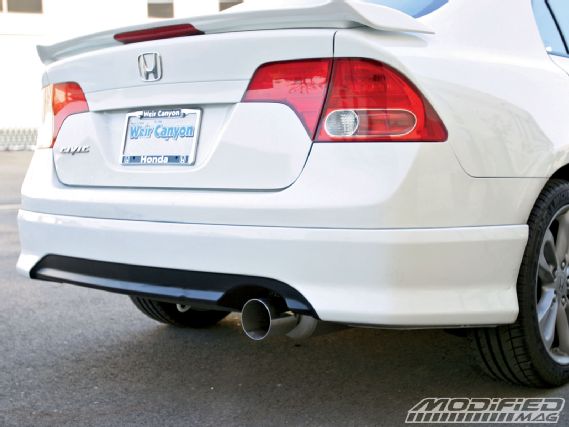 |
2007 Honda Civic Si - DC Sports - Proving Grounds
|
2007 Honda Civic Si - DC Sports - Proving Grounds
The DC stainless steel cat-back exhaust bolts directly onto the stock catalyst, or in our case, the race header. It uses 2.5-inch-diameter polished tubing throughout the entire system and comes with a straight-through muffler and a large resonator.
Gains Made
+18.3 hp
+14.7 tq
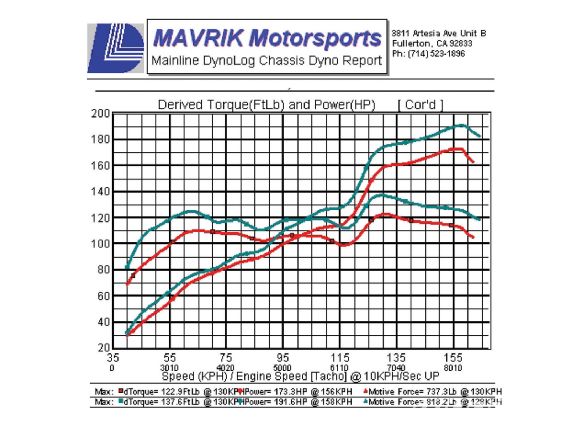 |
2007 Honda Civic Si - DC Sports - Proving Grounds
|
2007 Honda Civic Si - DC Sports - Proving Grounds
Before DC Header And Exhaust
173.3 whp and 122.9 lb-ft
After DC Header And Exhaust
191.6.3 whp and 137.6 lb-ft
Results
Instead of testing the header and exhaust as separate components, we decided to do one combined dyno test on Mavrik Motorsports' Mainline Dynalog AWD chassis dyno. The rationale behind this is that few would bother to put a race header on a car and not change the stock exhaust because the flow gains in the header would be negated by the restrictions down stream in a stock exhaust.
What we got in the end blew us out of the water. Compared to stock, the DC header and exhaust combination picked up almost 20 whp at the very top and the torque curve was bumped up by at least 10 lb-ft across the entire powerband. While such power gains on a Honda motor near rev-cut is rare from just two bolt-on parts, it's even more rare to see such broad torque gains across the board. On further investigation, we realized the source of our power comes from an almost 1-point increase in the A/F ratio. While still on the safely rich side, the DC components leaned out the mixture just enough to increase combustion efficiency without putting the engine in danger. The DC exhaust also has a nice deep tone unlike other products that offer a tinny sound.

